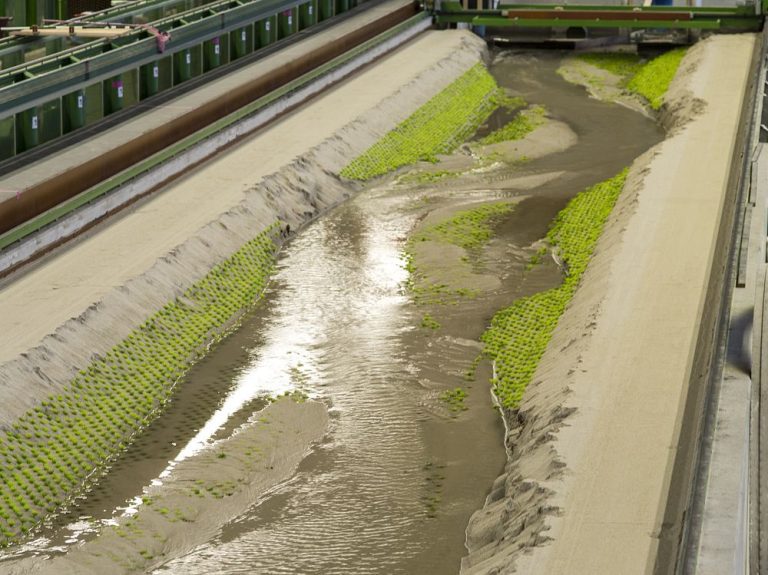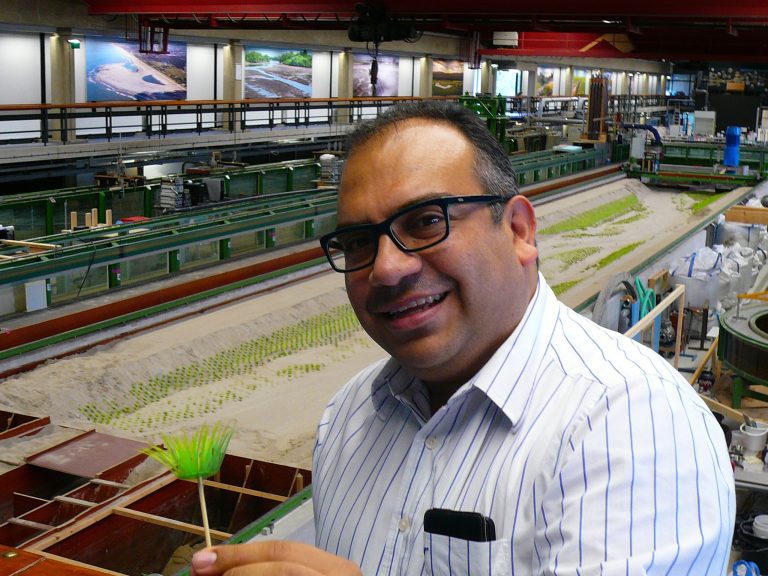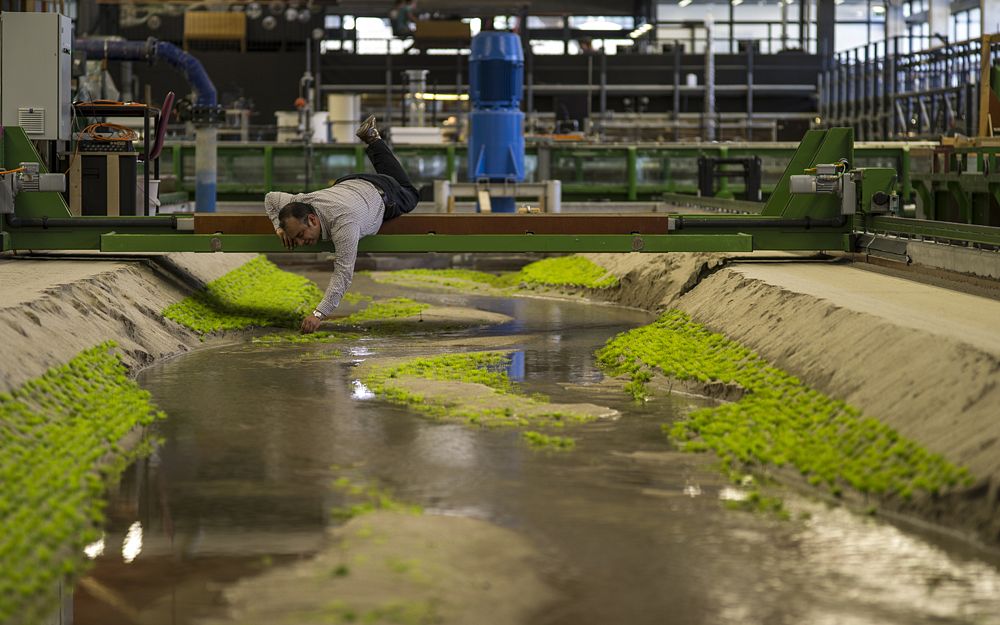Ten thousand plastic plants in the large flume from TU Delft’s Waterlab have helped to unravel the role of riverbank vegetation on a stream’s development.
Half a year after the ‘Lunterse beek’ stream followed the gentle meandering trajectory, which was meant to recreate the situation before the canalisation in the 1960s, it had cut off one of its new bends and returned to its old river bed.
Such incidents illustrate that meandering rivers are still not fully understood or predictable. A known unknown is the influence of plants on the development of riverbeds. That has become the object of study for the Colombian PhD candidate Andrés Vargas Luna, who worked in hydrology before coming to Delft. During his PhD research, he had to zoom in on what exactly happens to a waterway as a consequence of erosion and accretion, and on the influence of plants on the process.
As part of his research, he studied the development of an alternating stream in the 45 metre long flume in TU Delft’s Waterlab. It was a slow process. Water flowing over the flume’s sand bed for little above 100 hours translated to 4 weeks work.
 Experiments
ExperimentsExperiments
The tests started with just an 80-centimetre wide straight channel down the flume. A small obstruction at the side induced the first sand bar to form, which in turn led to two other bars further downstream. No surprises thus far.
For the next test, ten thousand artificial plants were put on the floodplains. After 99 hours of flow, the meandering was less. Apparently, the plants had reduced the bank erosion.
In the last test, Vargas simulated colonisation of newly formed banks by putting additional plants on sand bars. The effect was amazing. Not only did the ‘plants’ stimulated accretion by slowing down the water during maximal flow, but they also enhanced erosion on the opposite bank. The ‘vertical growth of both levees and floodplains’ clearly influenced the shape of the riverbed.
 Delft3D
Delft3DDelft3D
The field measurements of the Lunterse beek stream were implemented in the Delft3D software, which showed adequate reproduction of ’the effects of vegetation and the observed morphological changes,’ Vargas wrote in his PhD thesis.
Vargas said the improved understanding of the development of sandy riverbeds could be used in reconstruction projects. Meanwhile, surprises can still happen because of clay, roots or other non-homogeneities in the ground. “There remains always work to be done,” he laughed. “For the next one.”
• Andrés Vargas Luna, Role of Vegetation on River Bank Accretion, PhD supervisors Professor Wim Uijttewaal (CiTG) and Dr. Alessandra Crosato (Unesco-IHE), 16 November 2016.



Comments are closed.